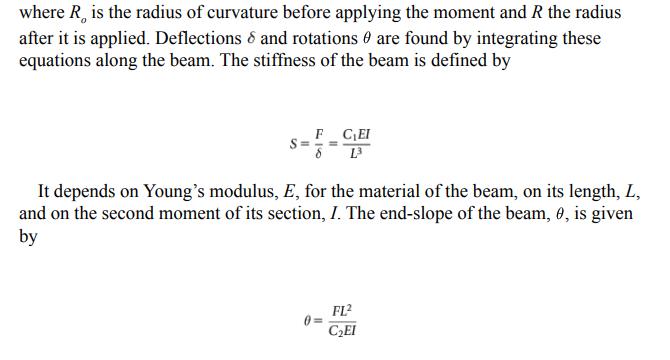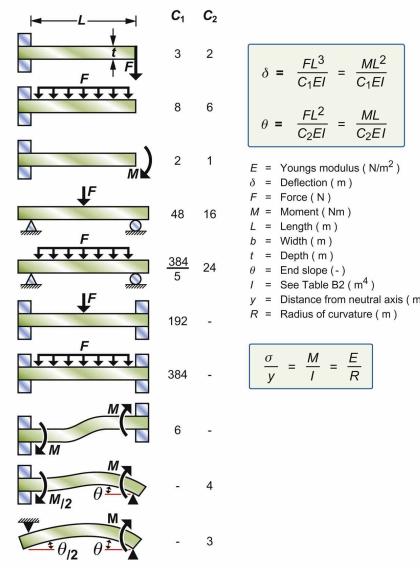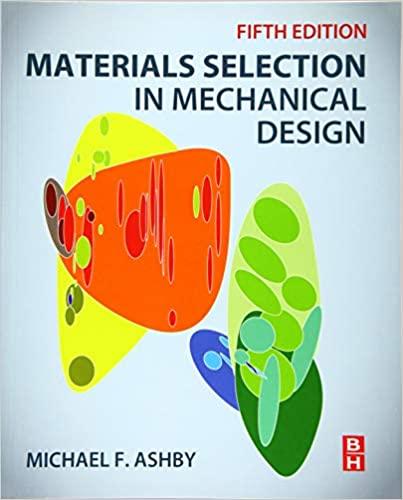Start each of the four parts of this problem by listing the function, the objective and the
Question:
Start each of the four parts of this problem by listing the function, the objective and the constraints. You will need the equations for the deflection of a cantilever beam with a square cross-section \(t \times t\), given in Appendix B, Section B3. The two that matter are that for the deflection \(\delta\) of a beam of length \(L\) under an end load F:
a. Show that the best material for a cantilever beam of given length \(L\) and given (i.e., fixed) square cross-section \((t \times t)\), that will deflect least under a given end load \(F\), is that with the largest value of the index \(M=E\), where \(E\) is Young's modulus (neglect self-weight) Fig. E4.12A.
b. Show that the best material choice for a cantilever beam of given length \(L\) and with a given section \((t \times t)\) that will deflect least under its own selfweight is that with the largest value of \(M=E / ho\), where \(ho\) is the density Fig. E4.12B.
c. Show that the material index for the lightest cantilever beam of length \(L\) and square section (not given, i.e., the area is a free variable) that will not deflect by more than \(\delta\) under its own weight is \(M=E / ho^{2}\) Fig. E4.12C.
d. Show that the lightest cantilever beam of length \(L\) and square section (area free) that will not deflect by more than \(\delta\) under an end load \(F\) is that made of the material with the largest value of \(M=E^{1 / 2} / ho\) (neglect self-weight) Fig. E4.12D.
Data From Appendix B3




Fig. E4.12C

Fig. E4.12B

Fig. E4.12D

Step by Step Answer:






